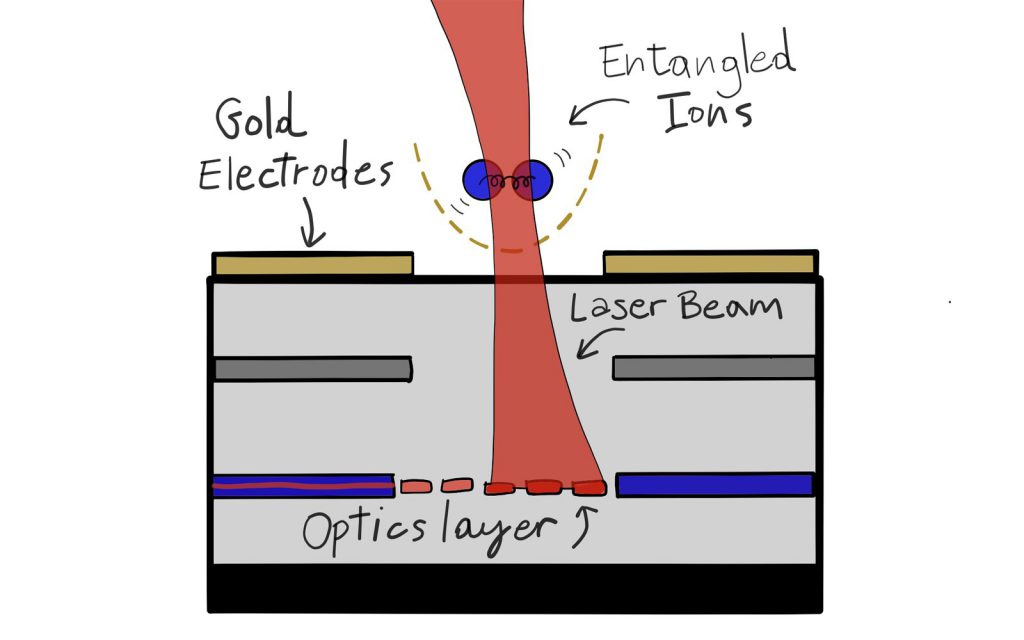
Researchers at ETH have demonstrated a new technique for carrying out sensitive quantum operations on atoms. In this technique, the control laser light is delivered directly inside a chip. This should make it possible to build large-scale quantum computers based on trapped atoms.
The team has demonstrated how to deliver multiple laser beams precisely to the right locations from within a chip in such a stable manner that even the most delicate quantum operations on the atoms can be carried out.
Essentially, the problem is how to send laser beams over several meters from the laser into a vacuum apparatus and eventually hit the bull’s eye inside a cryostat, in which the ion traps are cooled down to just a few degrees above absolute zero in order to minimize thermal disturbances.

The researchers commissioned a commercial foundry to produce chips which contain both gold electrodes for the ion traps and, in a deeper layer, waveguides for laser light. At one end of the chips, optical fibers feed the light into the waveguides, which are only 100 nanometres thick, effectively forming optical wiring within the chips. Each of those waveguides leads to a specific point on the chip, where the light is eventually deflected towards the trapped ions on the surface. (Phys.org and ETH)
The paper has been published in Nature.
